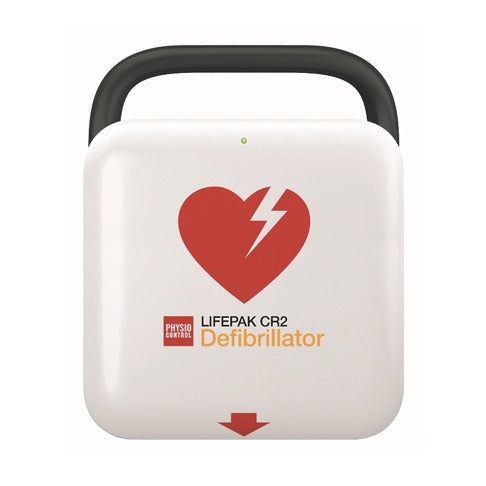A Canadian Perspective
In the critical moments following cardiac arrest, every second counts. When someone's heart stops beating effectively, their survival chances decrease by 7-10% with each passing minute. This stark reality highlights why Automated External Defibrillators (AEDs) are not merely beneficial additions to commercial buildings—they are potential lifesavers that building owners and managers should seriously consider implementing.
Understanding the Impact of AEDs
Sudden cardiac arrest (SCA) affects approximately 50,000 Canadians annually, with most cases occurring outside of hospital settings. When cardiac arrest strikes, immediate intervention is crucial:
- CPR alone offers a survival rate of approximately 5%
- CPR combined with early defibrillation can increase survival rates to over 70%
- For every minute without defibrillation, survival rates drop dramatically
AEDs are designed to be user-friendly, with voice prompts guiding even untrained individuals through the process of analyzing heart rhythms and delivering life-saving shocks when necessary. These devices have transformed what was once a specialized medical procedure into an accessible emergency response tool.
The Canadian Regulatory Landscape
Unlike some jurisdictions, Canada does not yet have federal legislation mandating AEDs in all commercial buildings. However, various provinces have taken steps toward increasing AED presence:
Ontario's Chase McEachern Act (2007) provides legal protection for individuals using AEDs in emergencies. Manitoba's Defibrillator Public Access Act requires AEDs in designated public places. British Columbia has implemented the BC Public Access to Defibrillation Program to increase AED availability.
This patchwork of regulations reflects a growing recognition of AEDs' importance, but many commercial buildings still lack these crucial devices.
Moral and Ethical Considerations
Beyond legal requirements, building owners and managers face compelling ethical reasons to install AEDs:
Duty of Care
Commercial property managers have an implicit duty of care to those who enter their premises. This includes creating an environment that reasonably protects occupants from foreseeable risks. Given the prevalence of heart disease in Canada—the second leading cause of death nationally—cardiac emergencies are indeed foreseeable events.
Corporate Social Responsibility
In an era where businesses increasingly emphasize their commitment to community wellbeing, installing AEDs represents a tangible demonstration of social responsibility. It signals to employees, clients, and visitors that their safety is prioritized.
Risk Management
From a pragmatic perspective, AEDs represent sound risk management. The cost of installing and maintaining these devices is minimal compared to the potential liability issues that could arise from failing to provide reasonable emergency preparation.
Economic Considerations
The financial argument for AEDs is equally compelling:
- Initial investment: Most AEDs cost between $1,899-$2,500 CAD
- Maintenance costs: Approximately $100 annually for battery and pad replacements
- Potential ROI: Immeasurable in terms of lives saved
When weighed against other building safety features like fire suppression systems, AEDs represent a relatively minor expense with significant potential benefits. Furthermore, some insurers offer premium reductions for buildings with comprehensive emergency response equipment.

https://aed.ca/products/stryker-physio-cr2-semi-auto-english-wifi
Implementation Best Practices
For building owners and managers considering AED implementation:
- Strategic placement is critical—AEDs should be accessible within a 1-3 minute walk from any location in the building
- Training programs enhance effectiveness—while AEDs are designed for ease of use, basic training increases confidence and response time
- Regular maintenance ensures functionality—devices should be checked monthly and after any use
- Registration with local EMS systems helps create a comprehensive community response network
- Clear signage ensures AEDs can be quickly located in emergencies
Moving Beyond Minimum Requirements
Progressive building managers are increasingly viewing AEDs not merely as optional safety equipment but as essential infrastructure—similar to fire extinguishers and emergency lighting. This shift in perspective recognizes that heart safety is a fundamental aspect of building safety.
Some forward-thinking commercial properties have integrated AEDs into comprehensive heart-safe programs that include:
- Regular CPR and AED training for staff
- Designated emergency response teams
- Integration with building management systems
- Community outreach and education
Conclusion
The decision to install AEDs in commercial buildings transcends mere regulatory compliance—it reflects a commitment to occupant safety and community wellbeing. As cardiac arrest remains a leading cause of death in Canada, building owners and managers have both an opportunity and a responsibility to contribute to a heart-safe environment.
The question is no longer whether commercial buildings should have AEDs, but rather how quickly and effectively they can be implemented. In doing so, building managers aren't just enhancing their properties—they're potentially saving lives.
For more information on implementing AED programs in commercial buildings, contact AED.ca. They are Canada's AED Company.






